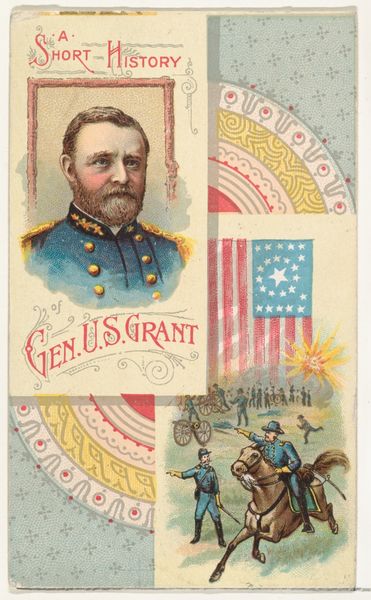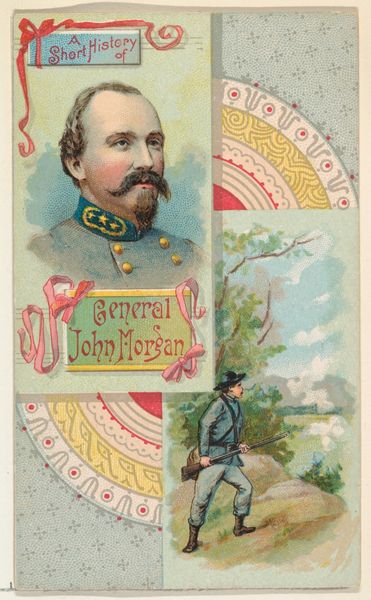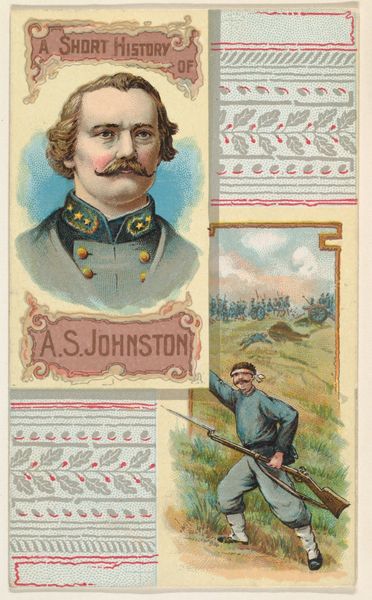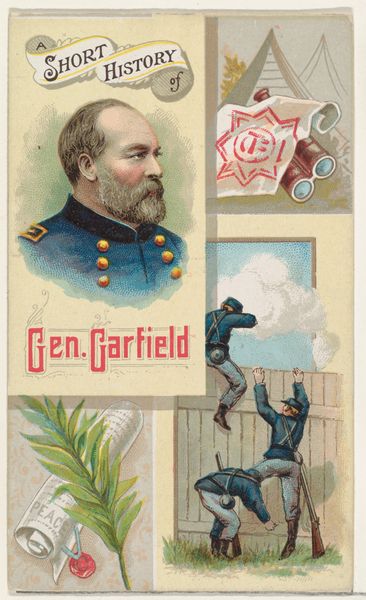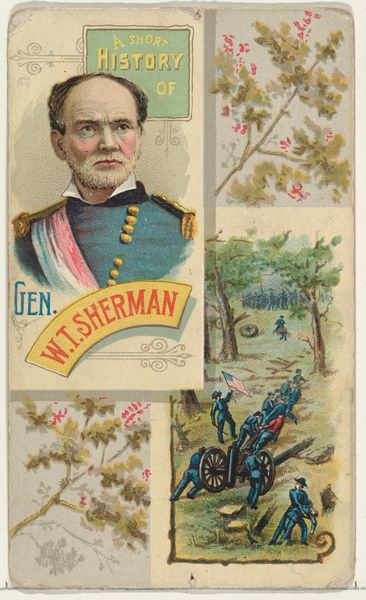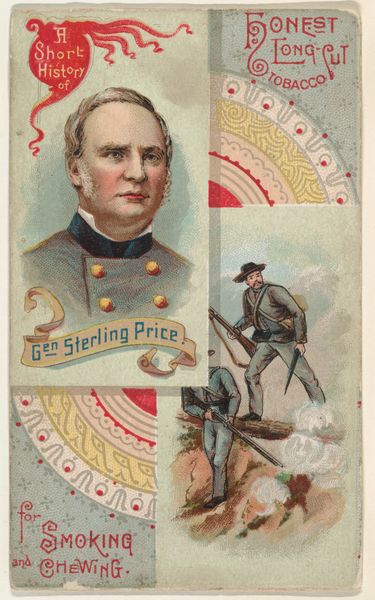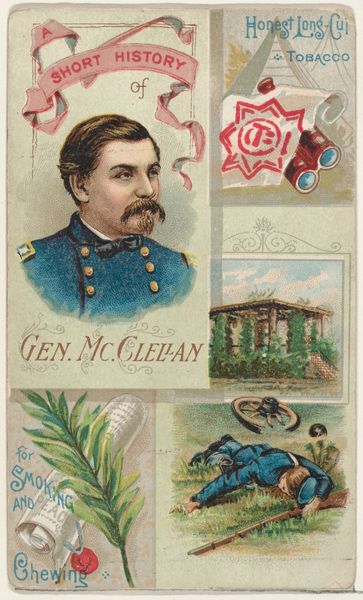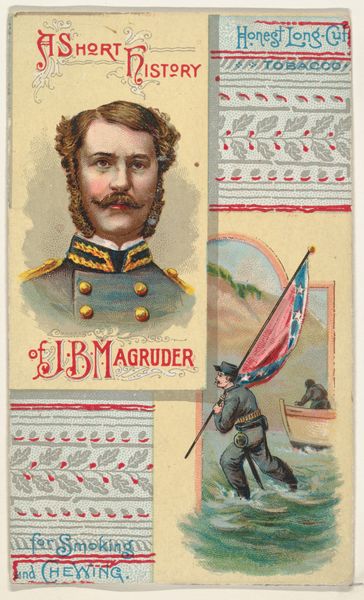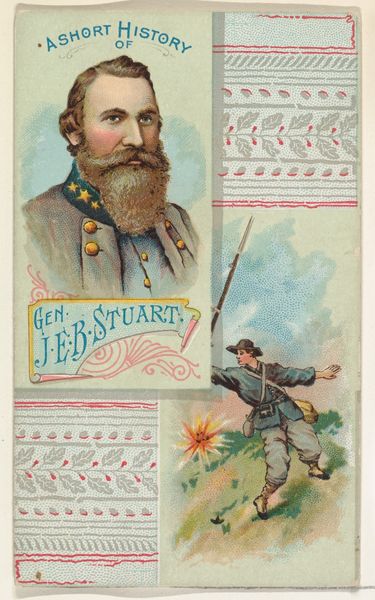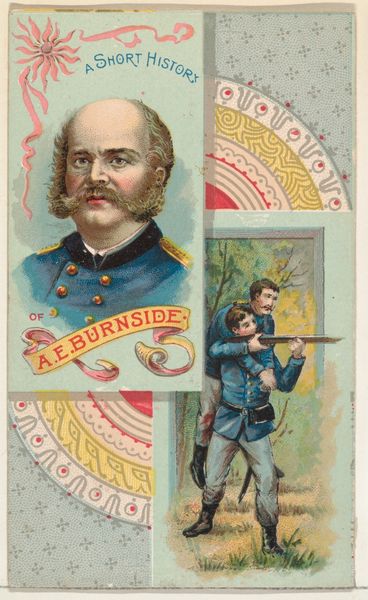
A Short History of General Philip Sheridan, from the Histories of Generals series (N114) issued by W. Duke, Sons & Co. to promote Honest Long Cut Smoking and Chewing Tobacco 1888
0:00
0:00
drawing, coloured-pencil, print
#
portrait
#
drawing
#
coloured-pencil
# print
#
landscape
#
coloured pencil
#
orientalism
#
horse
#
men
#
genre-painting
#
history-painting
Dimensions: Sheet: 4 3/16 × 2 1/2 in. (10.7 × 6.4 cm)
Copyright: Public Domain
Curator: This piece, created in 1888 by W. Duke, Sons & Co., offers "A Short History of General Philip Sheridan," part of their Histories of Generals series, using colored pencil and print. It’s currently held at the Metropolitan Museum of Art. Editor: My initial impression is how meticulously arranged the composition is, almost like a collage in miniature. There’s a central portrait, framed by vignettes of military life and symbols. The color palette seems subdued, but there's a clarity in the linear depiction that catches my eye. Curator: Precisely. Contextually, these cards were distributed with tobacco products. What does it mean to intertwine the image of a Civil War general with the pleasures and social rituals associated with tobacco use in that era? Editor: Semiotically, each image operates as a signifier, contributing to a narrative of valor and American identity. Consider the use of landscape as backdrop, the man on horseback. Each signifies aspects of General Sheridan’s achievements, creating a multi-layered portrait through carefully chosen imagery. Curator: And we can't ignore how tobacco companies actively cultivated a nostalgic view of the Confederacy, particularly toward the end of the 19th century. Positioning Sheridan, a Union general, within this framework subtly reconciles conflicting narratives in the aftermath of a deeply divisive war. It speaks to shifting societal attitudes where commerce often overshadows deeply rooted conflicts. Editor: I find the relationship between the central portrait and surrounding elements most interesting. The formal portrait anchors the entire piece, presenting Sheridan as a figure of authority, while the vignettes depict his actions and accomplishments. The image is self-contained; a total image carefully planned. Curator: Absolutely. The inclusion of a "peace" scroll along with the battles represented adds another layer. Are we to read it as reconciliation or pacification? How does Sheridan’s history get sanitized or complicated by its promotional context? What ideological work is being done through such images during the Reconstruction era? Editor: Observing the tonal variations and detail achieved with colored pencil enhances my appreciation of this little image, the artist demonstrating great control in creating this multifaceted composition. Curator: Thinking about this work through a critical lens helps us unpack the intricate layers of representation, power, and consumerism inherent in even seemingly straightforward images like these trade cards. Editor: Yes, a close observation highlights just how deliberate each visual decision is within the frame.
Comments
No comments
Be the first to comment and join the conversation on the ultimate creative platform.


